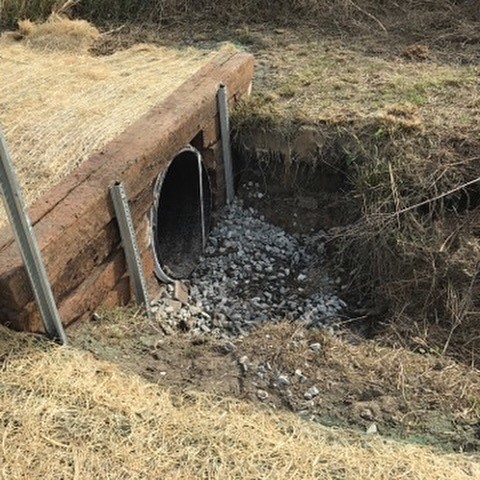Achieve Success With Culvert Setup: Best Practices Revealed
Mounting culverts is an important aspect of facilities development, requiring precision and adherence to finest practices for long-term success. Whether taking on a new project or preserving existing culverts, the process demands precise interest to detail. From the preliminary material selection to the lasts of maintenance, each action plays a vital role in the performance and longevity of the culvert system. In this conversation, we will explore crucial methods, tips, and guidelines that can significantly affect the outcome of culvert setups. Understanding these crucial factors is vital in ensuring the structural honesty and efficiency of culverts, making it imperative for experts and fanatics alike to grasp these foundational concepts.
Proper Material Choice

Concrete culverts are known for their strength and sturdiness, making them ideal for rush hour areas and large water flow volumes. Corrugated steel culverts are lightweight and very easy to install, perfect for temporary applications or circumstances needing a quick option. Plastic culverts are light-weight, corrosion-resistant, and cost-effective, making them a prominent choice for different culvert installations. Compound products provide a mix of residential or commercial properties from different products, providing an adjustable service for details project requirements. Eventually, picking the correct material is necessary to make certain the culvert system operates effectively and has a lengthy life span.
Website Prep Work Tips
Efficient site preparation is essential for the successful setup of culverts, making sure correct integration with the surrounding environment and long-term functionality. Before beginning the installation process, it is important to carry out a detailed website analysis to establish the ideal dimension, type, and positioning of the culvert.
Next, the soil problems need to be examined to examine the stability and load-bearing capacity of the ground. Relying on the soil kind, additional procedures such as compaction or reinforcement might be needed to stop resolving or moving of the culvert over time. Correct drain factors to consider must also be taken into consideration to avoid water buildup around the culvert, which can result in disintegration or architectural damage.
Finally, developing correct access to the site for building and construction equipment and making sure conformity with any kind of regulatory demands are crucial facets of website prep work. By adhering to these site preparation suggestions, the setup of culverts can be accomplished effectively and effectively, advertising additional reading the longevity and capability of the culvert system.
Installment Methods

First of all, it is important to properly measure and mark the place where the culvert will be installed. This ensures proper alignment and stops any errors throughout the setup phase. Second of all, excavation ought to be done meticulously to develop a stable foundation for the culvert. The trench must be dug to the proper deepness and size, thinking about the dimension and kind of culvert being set up.
Following, the culvert ought to be put in the trench following the manufacturer's guidelines. Correct positioning is critical for the capability and durability of the culvert. Backfilling the trench with the proper material and compacting it in layers is the last step in the installation procedure. This makes certain the culvert is safely in location and ready to hold up against the needs my website it will face. By adhering to these setup techniques faithfully, the culvert will certainly be efficiently mounted, adding to the overall success of the task.
Maintenance Standards
After completing the mindful installation of culverts adhering to proper strategies, adherence to maintenance standards is paramount to ensure their long life and functionality. Normal inspection is vital to identify any type of indicators of wear, obstructions, or structural damages at an early stage. Evaluations need to include examining for sediment accumulation, disintegration around the culvert edges, and any type of indications of deterioration or rust. Cleaning particles, such as branches or leaves, from the inlet and electrical outlet frequently is important to avoid obstructions that can lead to flooding.
In addition, keeping correct incline and placement of the culvert is essential for reliable water circulation and to stop potential clogging. Road construction. Any plant life near the culvert ought to be managed to avoid origin breach and clogs. In areas vulnerable to freezing temperature levels, applying winter months upkeep practices such as ensuring appropriate drain to avoid ice buildup is crucial
Routine maintenance not just expands the life expectancy of culverts but likewise ensures they operate successfully in handling water flow, lowering the danger of damage to framework and surrounding locations.
Troubleshooting Common Issues
Dealing with usual issues that may emerge with culverts requires a methodical approach and cautious evaluation of the underlying reasons. One regular trouble run into is clogs within the culvert, typically triggered by debris build-up or sediment build-up. To troubleshoot this problem, routine evaluations and maintenance are important to ensure correct performance. In addition, improper installation leading to misalignment or inadequate incline can cause water circulation disruptions or perhaps structural damage. By examining the culvert positioning and incline consistently, potential issues can be recognized and fixed quickly.

Verdict
Finally, attaining success with culvert installment calls for mindful consideration of product option, complete site preparation, correct setup methods, and regular maintenance. By complying with ideal methods and fixing common issues, the integrity and capability of culverts can be made certain. It is vital to comply with guidelines and referrals to stop any type of possible problems and guarantee the durability of the culvert system.